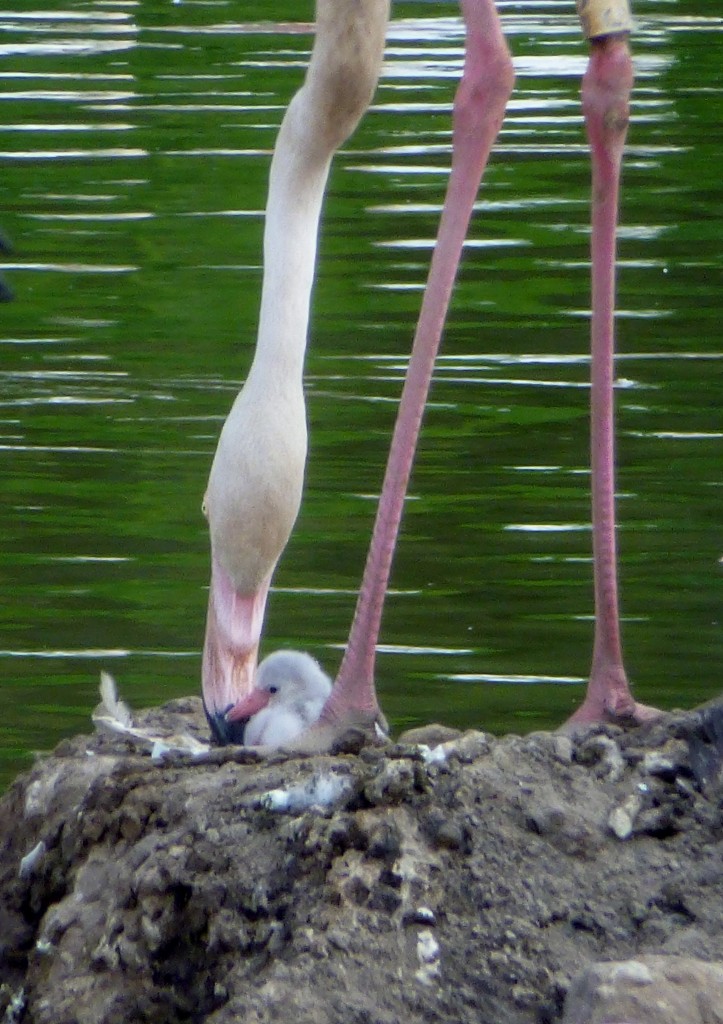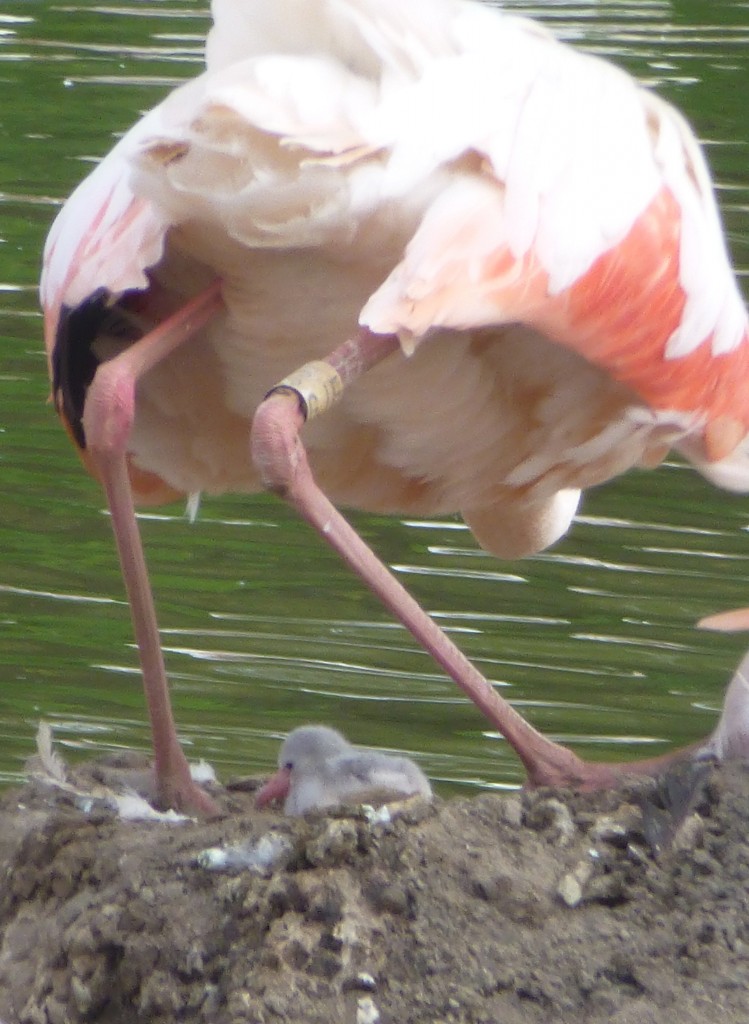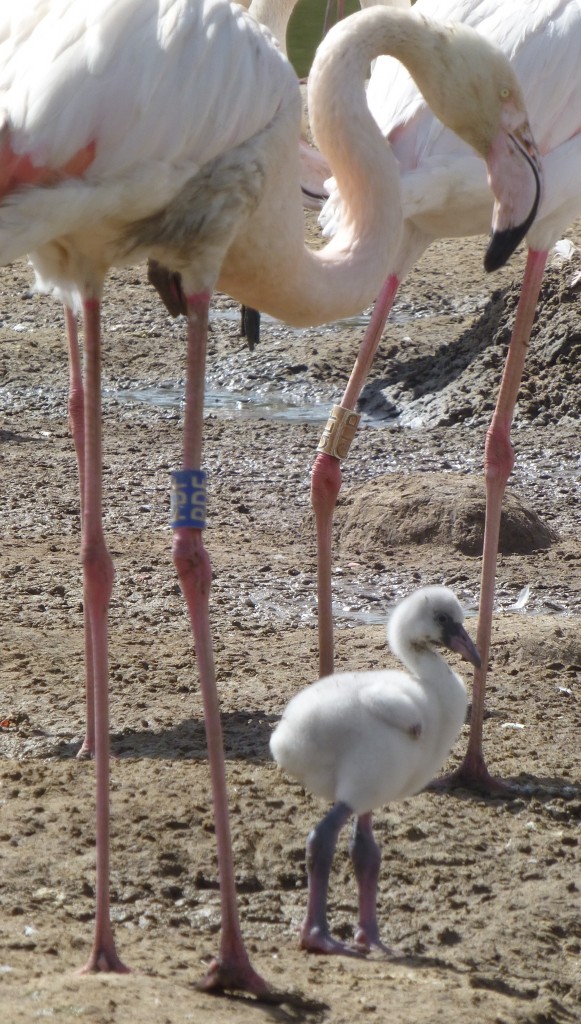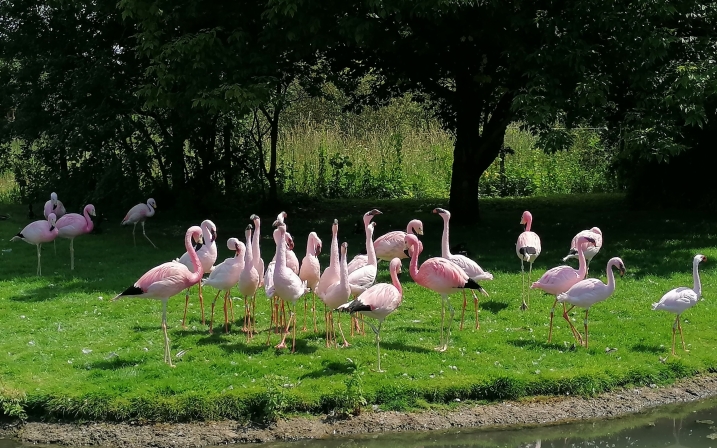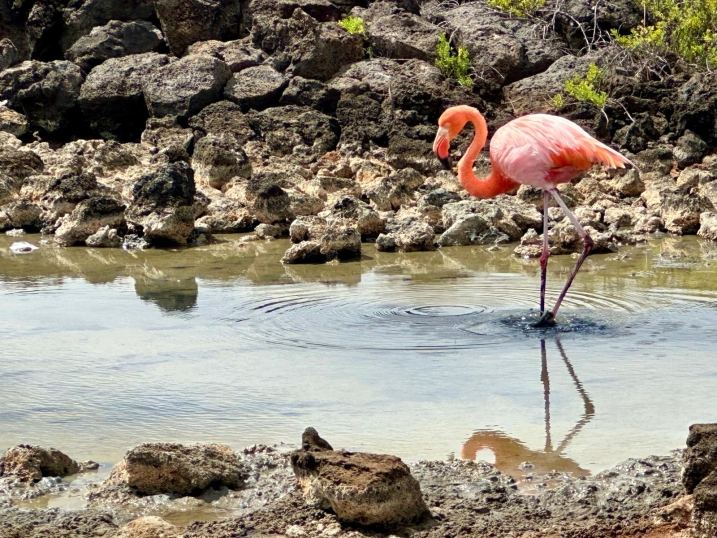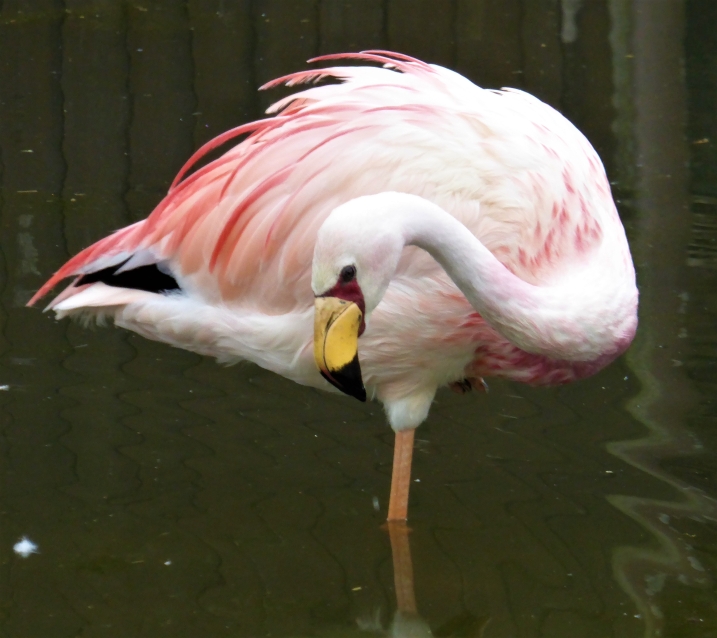Baby boom in Flamingo Lagoon!
There are currently several grey fluffy bundles wandering around the nesting areas in Flamingo Lagoon, and many more either hatching or about to hatch under protective parents. The nesting colony of greater flamingos is quite obliging in that some of them are very close to the hide's windows so you can get very good views of flamingo parenting behaviour. What is especially interesting to see, and look out for it if you can, is for either mummy or daddy flamingo to be dribbling their crop milk into the chicks beak to feed it.
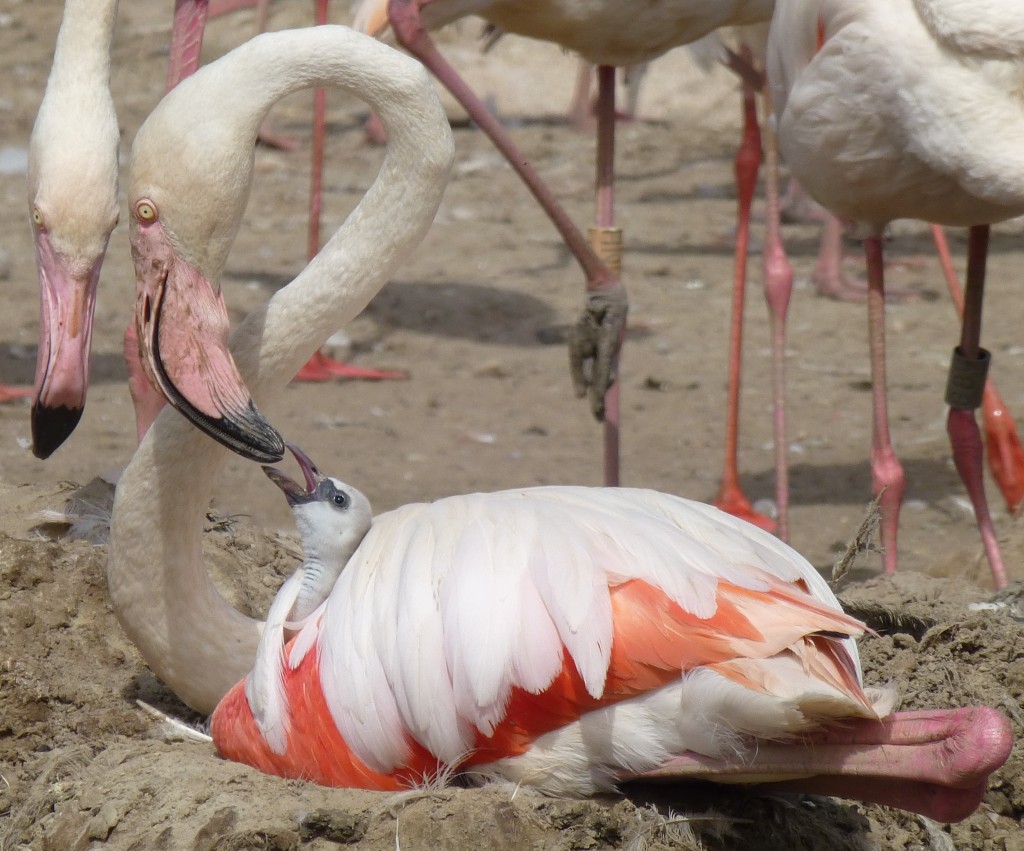
Chicks that are off their nests are now following their parents around and learning all about the big, wide world and what it is like to "be a flamingo". Having been squidged up in an egg for 30 days, it takes a while for a chick's legs to be strong and supportive enough to allow them to move. Which is why we don't tend to see newly-hatched birds for a few days because they are kept safe and warm under the parent on the nest. But look in the above photo, of the chick peering out from under its parent's wing, this is the best way to spot a new arrival. An incubating flamingo clamped down tight on its nest, with something poking around just under its feathers.
Above; a newly-hatched chick is checked over by its parent. Brand new arrivals, have a very straight, pale beak and very soft pink legs. They have to wait on the nest for a few days before they are strong enough to walk around.
Above; a slightly blurred photo but one I thought that was interesting. A chick's eye-view of what it is like to be incubated! Let's hope Mr or Mrs Flamingo doesn't sit down with too much of a bump...
When new chicks are stronger and can walk without tripping over themselves, they leave their nest mounds and begin to form groups together, called crèches. The first few chicks to hatch don't have the benefit of a crèche to join so they stay around the legs of their parent birds, and other adults, for protection.
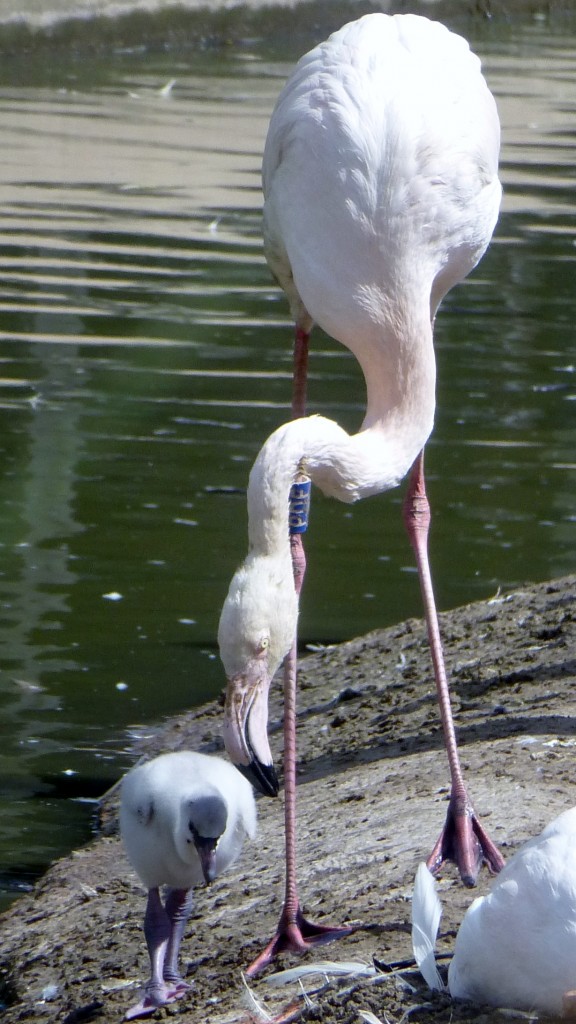
And what about other breeding flocks? I have already mentioned lesser flamingos in a previous post and will talk about Chileans again shortly. The 130+ strong flock of Caribbean flamingos has laid very early this year and this is a very good sign (providing the weather holds!). The first egg, on 20th May, weighed over 200g which is very large for this species. Large eggs are normally better quality than small eggs so let's hope that this egg (and the ones that follow it) are fertile. Here are a few photos of devoted flamingo keeper Phil collecting the egg from the nest, replacing it with a dummy (a wooden egg) and taking it up to the Duckery into the care of incubation guru Phoebe until it begins to hatch.
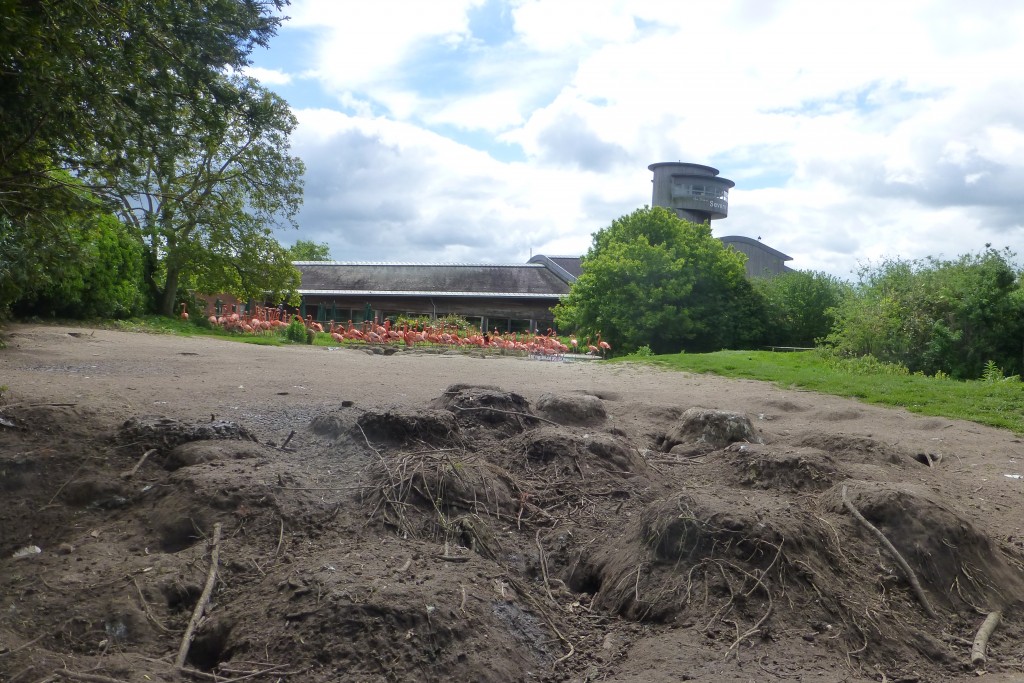
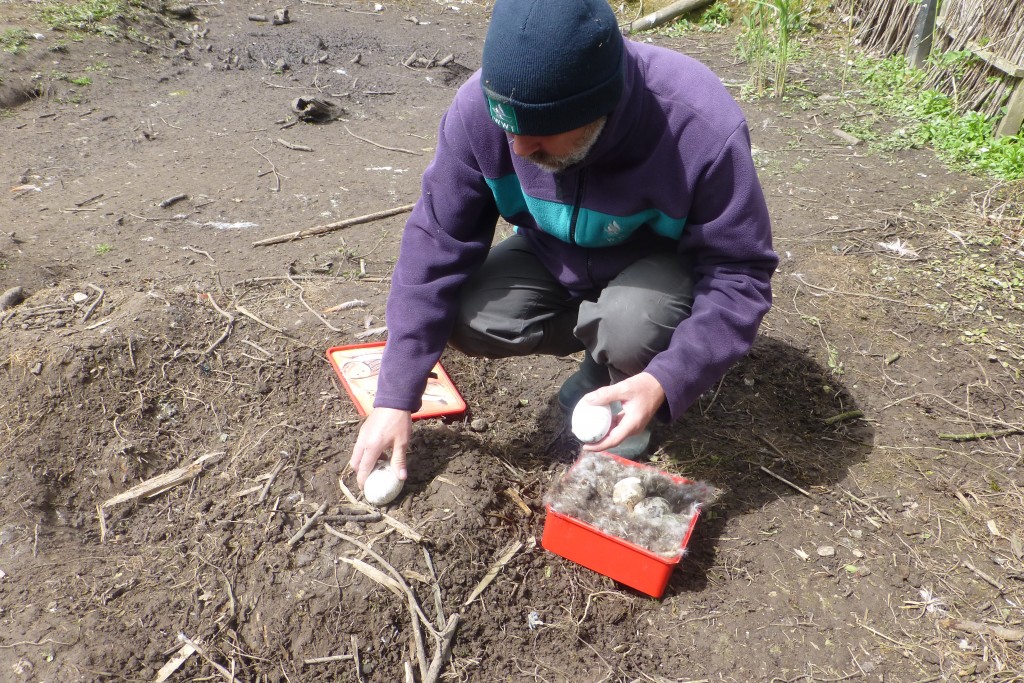
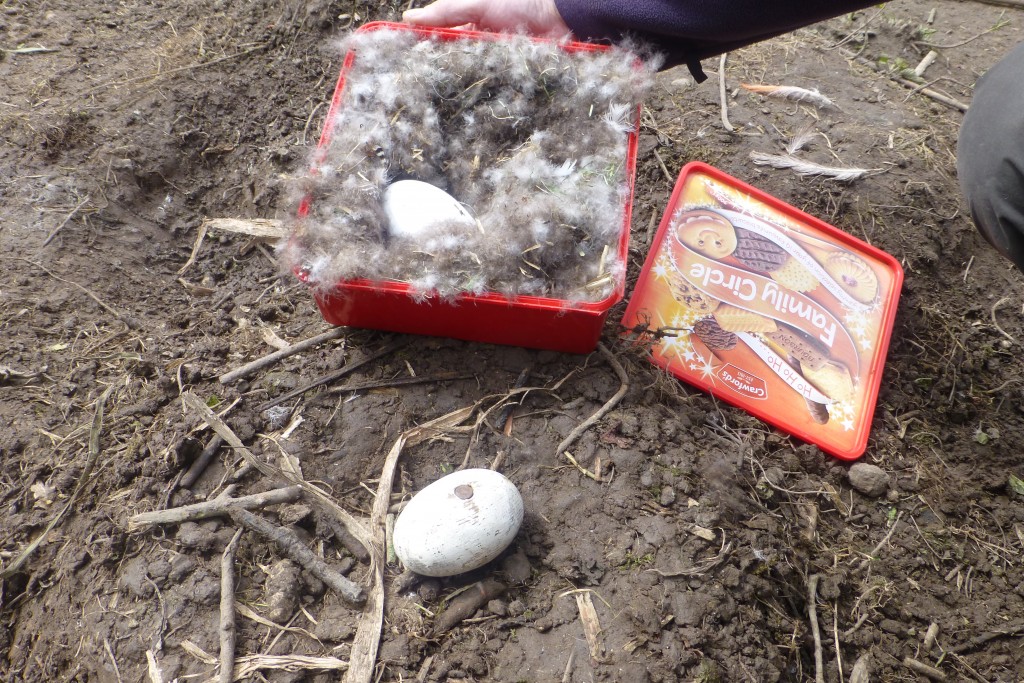
More on making baby flamingos in a future post. Until then, enjoy the new arrivals!
